Einleitung
Dies ist eine Anleitung für Sony DualShock 4 Playstation 4 Controller und kann an anderen Controllern beliebiger Firmen (etwa Scuf oder anderen Custom Controllern) angewendet werden.
Dieser Vorgang wird dabei helfen, nicht mehr richtig funktionierende L3 und R3 Analog-Sticks zu reparieren.
Bitte bei der Durchführung vorsichtig sein, da es sich um kleine und empfindliche Teile handelt. Besonders in den Schritten 1 und 2 muss darauf geachtet werden, nicht die Kabel zu beschädigen, die Controller und Batterie verbinden, das gleiche gilt natürlich auch für den Zusammenbau.
Werkzeuge
-
-
Entferne die 4 Schrauben von der Rückseite des Controllers mit einem #0 Kreutzschlitz-Schraubendreher.
-
Trenne Ober- und Unterseite des Controllers.
-
-
-
Entferne die einzelne Schraube in der schwarzen Kunststoffplatte, die die Hauptplatine abdeckt, mit einem #0 Kreutzschlitz-Schraubendreher.
-
Entferne die schwarze Kunststoffplatte vom Controller.
-
-
-
Entferne das Flachbandkabel, dass die Rückseite des Controllers mit der Hauptplatine verbindet.
-
Entferne die Hauptplatine von der Rückseite des Controllers.
-
-
-
Benutze einen Spudger um die Analogstick Sensoren aufzuhebeln.
-
Benutze ein Wattestäbchen und etwas Isopropanol, um Ablagerungen und Fett vom Sensor zu entfernen.
-
-
-
Um den Controller wieder zusammenzubauen, platziere die Controller-Rückseite auf die Hauptplatine.
-
Führe das rote Kabel durch das Controller Cover und stecke es ein.
-
-
-
Platziere die schwarze Kunststoffplatte wieder auf die Hauptplatine und schraube sie fest.
-
-
-
Platziere den Akku wieder in die schwarze Kunststoffplatte.
-
Stecke das weiße Kabel wieder in die Hauptplatine.
-
4 Kommentare
Thank you for this!! So many great pictures!! :D
The drift for me also prevented or interrupted movement with the left analog stick. Menus would continue to scroll after i scrolled them or wouldn’t move my character on screen.
Nach Wechsel der Potis hatte mein Controller Drift an beiden Achsen. Das liegt daran, dass die Potis nicht 100% mit denen der Werkskalibrierten übereinstimmen. Eine nachträgliche Kalibrierung ist leider nicht so einfach möglich, da die Korrekturdaten im EEPROM des Controllers gespeichert sind. Deshalb habe ich parallel zu den Potis je einen 2MOhm Poti gelötet, mit denen der Spannungsoffset kompensiert werden kann. Ergebnis: Keine Drift mehr. Die Controller arbeiten wieder einwandfrei.
zapf2000 -
Well organised pictorial lecture.great work.
Egeonu -
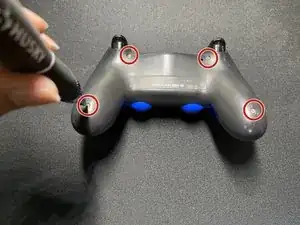
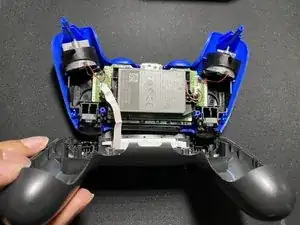
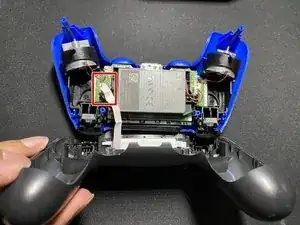
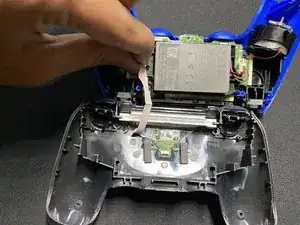
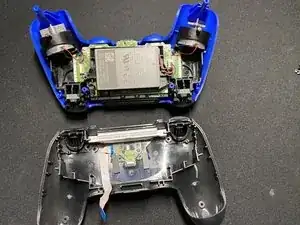
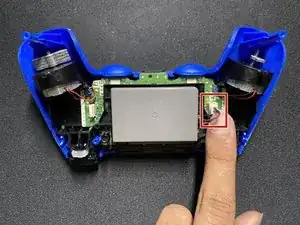
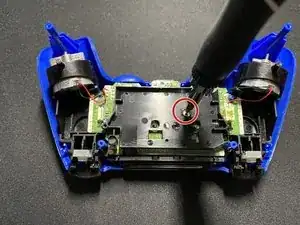
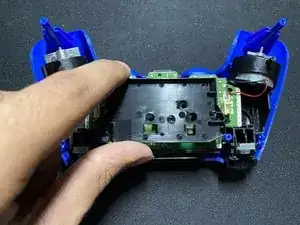
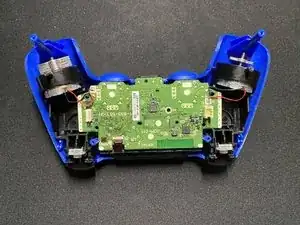
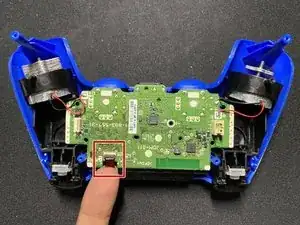
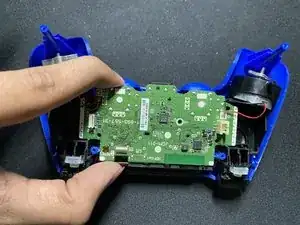
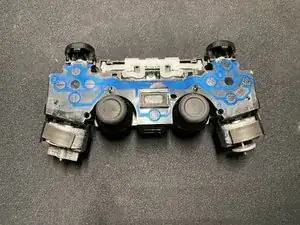
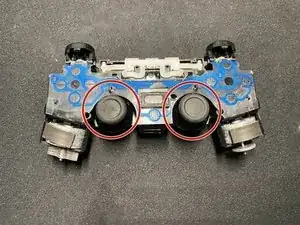
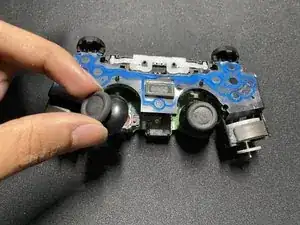
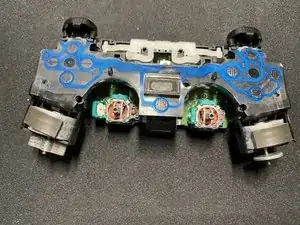
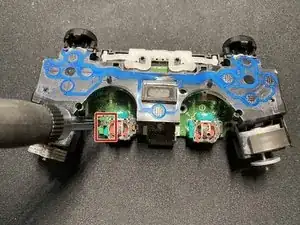
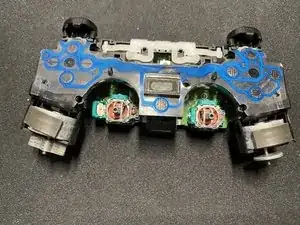
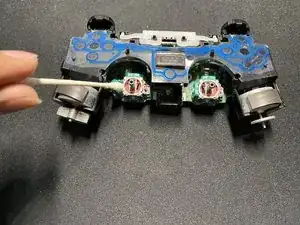
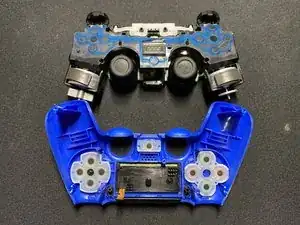
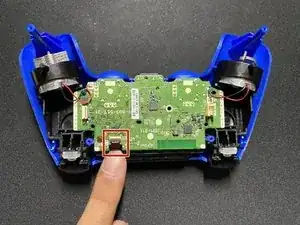
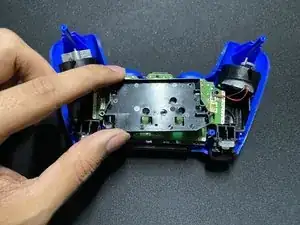
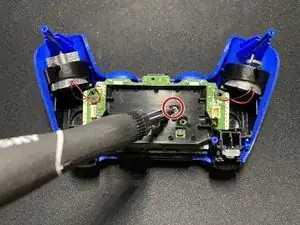
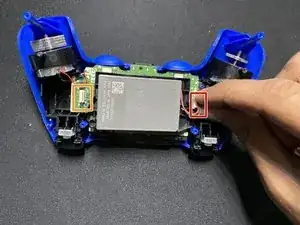
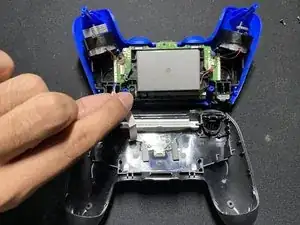

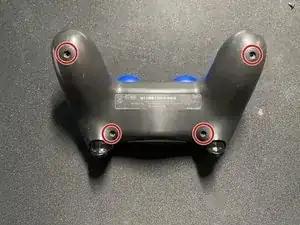
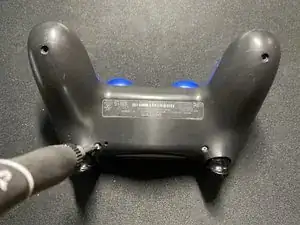
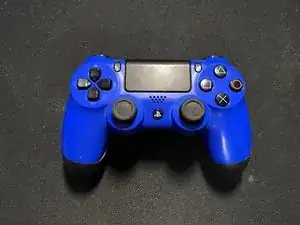

This actually breaks the clips on the upper left and right side of the top cover.
You can see it happen on their screenshots as well. It doesn’t matter too much because it gets assembled without an issue.
GlossGhost -
I think this is for telling if someone has broken into their controller, as I couldn’t find a way to open the controller without breaking this clip. The controller works perfectly fine without it, but its annoying its there.
Cameron -
It’s perfectly doable once you know where they are, just slide a prong between the case pieces, and twist in a way that “unlocks” the clips. All of my clips are intact after studying the images for a bit
Franz Rolfsvaag -